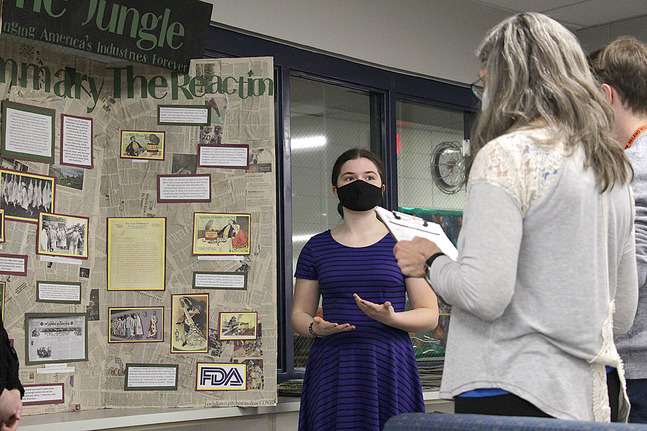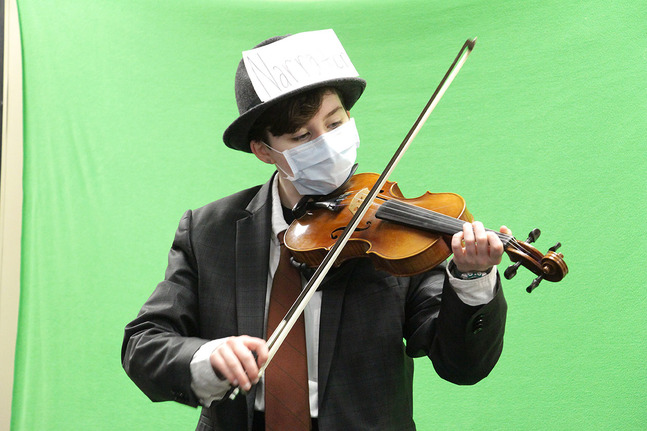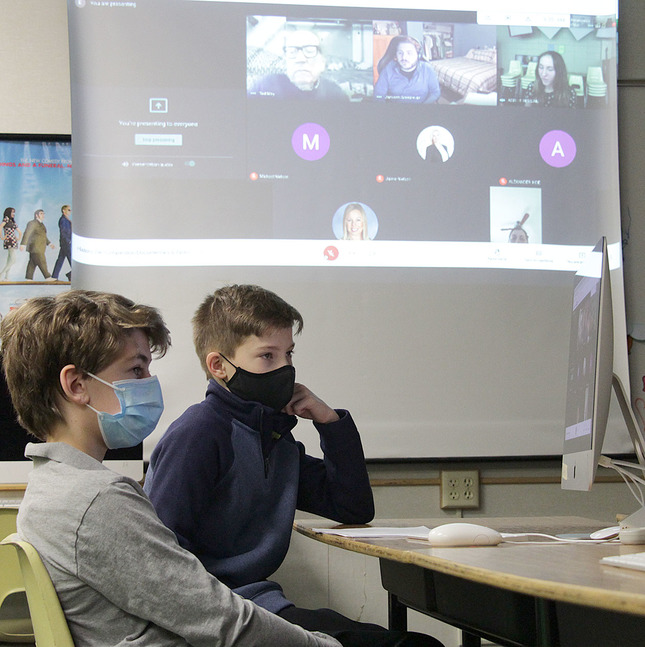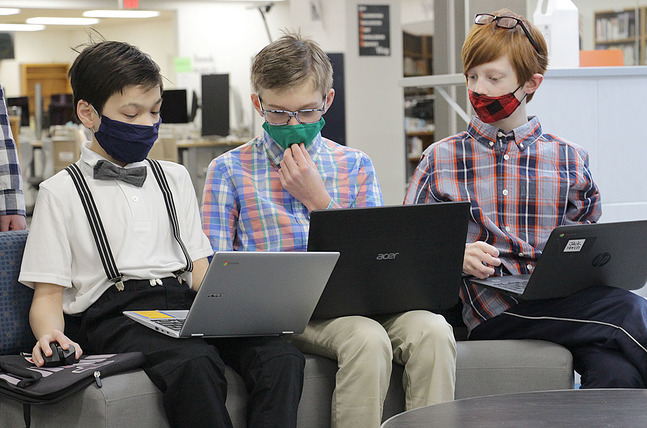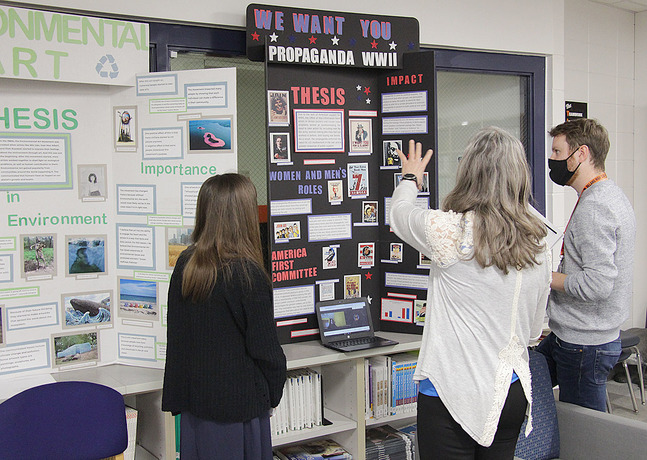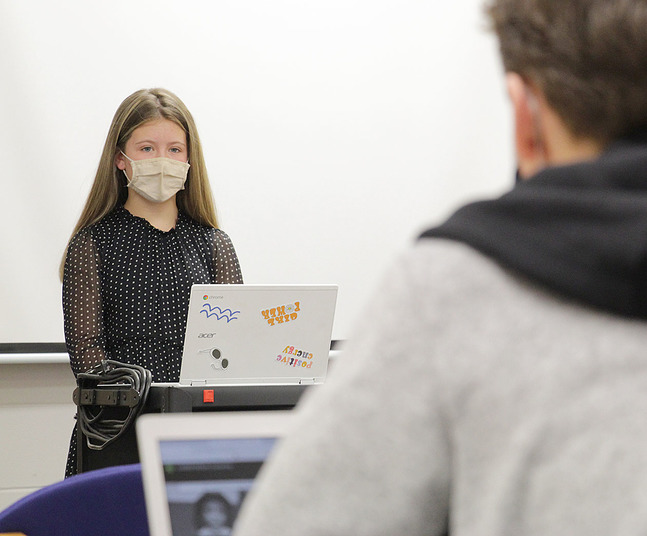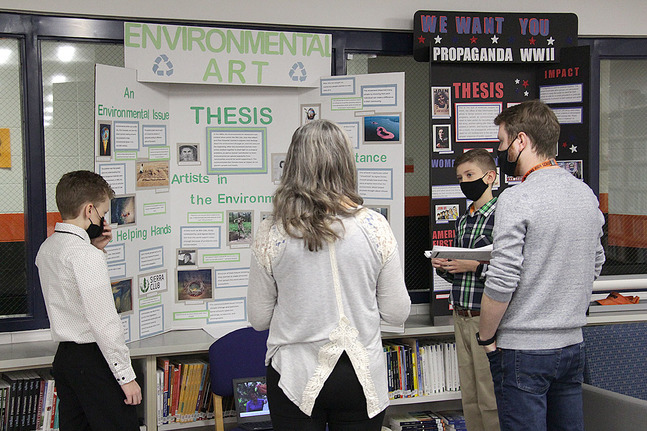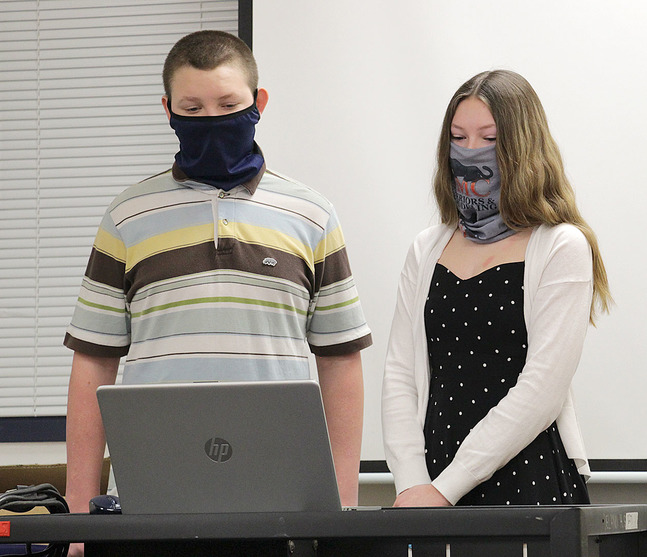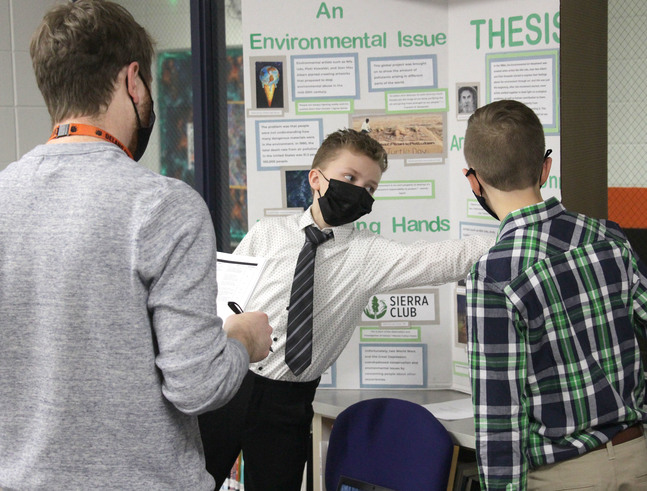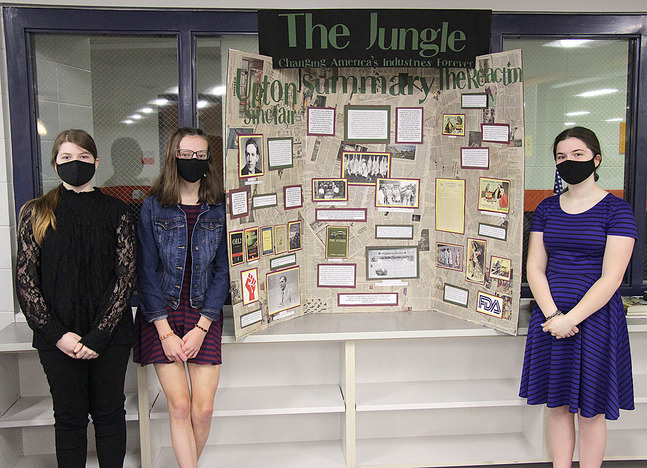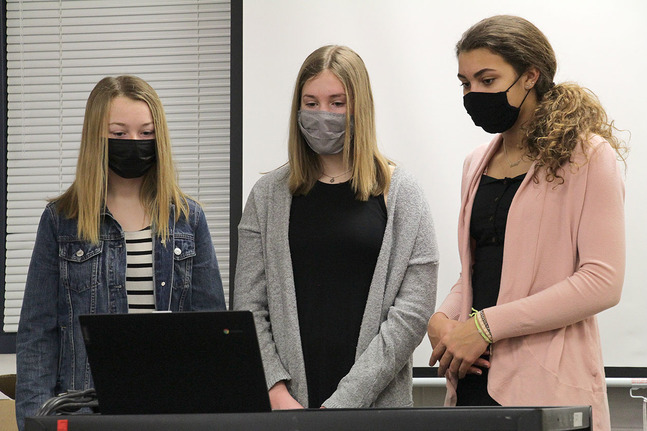Students present research on History Day
Posted on: Mar 3, 2021
A hybrid History Day competition challenged students and judges alike on Wednesday, Feb. 24, but many high quality research projects bore witness to the resiliency of the presenters.
“We were really proud and impressed, and the judges were equally impressed with what the students produced and how they presented themselves as well,” said Gifted and Talented Coordinator Heidi O’Donnell, adding that learning model shifts prior to the competition fractured teams of students and created extra challenges in the preparation phase.
Out of 26 total projects presented by sixth-graders and eighth-graders in the accelerated language arts program, a total of 17 advanced to the regional competition, which takes place remotely on Monday, March 8. Regional results will be announced around the end of March.
Students began working on their projects in October, but some of the eighth-grade teams were split on different hybrid learning days, and all students shifted to distance learning around the beginning of December.
“It got to be a little complex,” said O’Donnell with a laugh, adding that multiple students and student judges had to quarantine just before the competition itself.
Still, the overall quality of the projects was strong.
"Despite the challenges, the kids really took the initiative with it,” said O’Donnell. “They had a lot more independent project work to do since we weren’t face to face every day. There were some really, really good projects this year. I think overall everybody enjoyed the process of it. It helped to break up some of the craziness of this year to know that there was some stability in this project.”
Communication focus
The theme for this year’s National History Day competition is “Communication in History: The Key to Understanding.”
“It’s definitely a chance to dive into the research standards and use these skills to then analyze and create a project,” said O’Donnell. “Because of the length of the project, having a competition at the end of it is really motivating to students.”
Eighth-grader Mallory Musta said her team, including Evalyn Green and Clara Lawrence, were able to develop their research skills while creating an exhibit on Upton Sinclair’s book, “The Jungle,” and its effect on American industries.
“We learned how to find reliable sources, how to narrow down what we were looking for, and to be very specific to get just the information we needed,” Musta said.
Lawrence added that the focus on communication was timely, because team members were often not together in person.
“We had to be able to do things virtually, so communication wasn’t just the theme, but it was important for us too,” she said.
Sixth-graders Carson Snow and Lincoln Truax put together an exhibit on environmental art.
“We learned how to make a bibliography. We learned many different things,” said Snow. “We found many different sources. And really, we haven’t done something like this ever in our school years. Overall, we learned how to make an exhibit board. We did the research ourselves. We found images. That was the fun part.”
Eighth-graders Chloe Tesmer and Tatum Workman created a website focused on the infamous “War of the Worlds” radio program.
“I thought it was an interesting topic because he miscommunicated a story that was meant to entertain but ended up striking fear into people,” said Workman.
Although the pair had chosen to do a website project, thinking it would be the best format for the COVID era, problems arose when Workman’s home internet connection proved inadequate.
“Not being able to go to school for a long part of the project, because we had gone full distance learning, played a big part in our struggles,” said Tesmer.
To overcome those challenges Workman used time at school for robotics to do some of the work, and communication between them was key to finalizing the site before the competition. Even in a virtual setting, the opportunity to work with a classmate was also a welcome break over distance learning.
“When we had the connectivity it was fun to goof around while still getting stuff done. It was nice to have someone to talk to,” said Workman.
In the end, O’Donnell said the hybrid presentations, with some judges and presenters in person and others on screens, didn’t faze the students at all.
“Maybe the virtual aspect of it is more comfortable to them now. It’s just another day on Google Meets,” she said. “We look forward to having in-person judges next year. We hope it can go on as normal so we can get that live, in-person feedback.”
Post Categories: High School, Intermediate School
